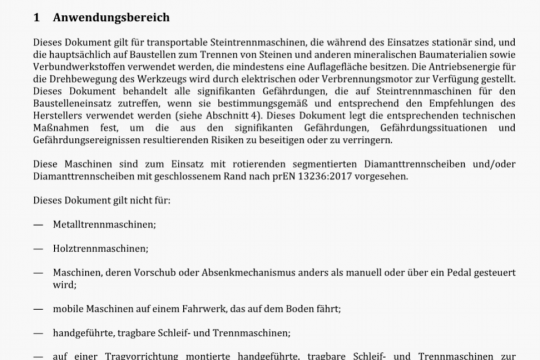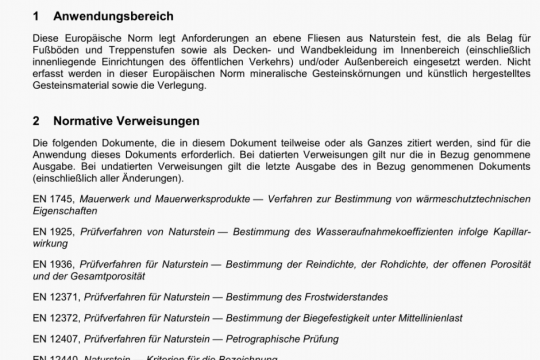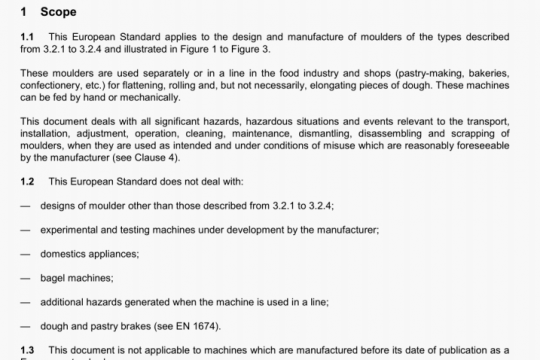DIN 228 pdf free download
DIN 228 pdf free download.Automotive fuels -Unleaded petrol – Requirements and test methods;English version EN 228:2012, English translation of DIN EN 228:2014-10.
Information to be marked on dispensing pumps used for delivering unleaded petrol, and the dimensions of thelabel shall be in accordance with the requirements of national standards or regulations for the marking of pumps for unleaded petrol.Such requirements shall be set out in detail or shall be referred to by referencc in a national annex to this European Standard.
Labelling shall be clearly visible, easily legible and displayed at any point where unleaded petrol with metallicadditives is made available to consumers. The label shall contain:”Contains metallic additives” in the nationallanguage(s) and shall be laid down in the National Annex to this document.
lt is also recommended that additional pump marking be applied for dispensing unleaded petrol containinghigh oxygenates (with a maximum oxygen content of 3,7 % (m/m) ) and/or low oxygenates (with a maximum oxygencontent of 2,7 % (m/m) ).
For unleaded petrol containing high oxygenates, pump marking shall consist of easily recognised visualsymbols that:
a)identify the unleaded petrol as complying with EN 228,b) specify the RON, and
c)identify that the unleaded petrol contains high oxygenates (in this case the recommended symbol is “E10″).
For unleaded petrol containing low oxygenates,pump marking shall consist of easily recognised visualsymbols that
d)identify the unleaded petrol as complying with EN 228,e) specify the RON, and
identify, at the discretion of the Member State and laid down in a National Annex to this document, thatthe unleaded petrol contains low oxygenates.
The pumps dispensing low or high oxygenates unleaded petrol may also be marked with text in the nationallanguage(s) at the discretion of the Member State describing the characteristics of the unleaded petrol and allsuch requirements shall be set out in detail or referred to in a National Annex to this document.
5Requirements and test methods
5.1 Ethanol
Unleaded petrol may contain up to 10,0 % (V/V) of ethanol complying with EN 15376.
When ethanol is used as a blending component,it may contain denaturants, if required by European andnational regulations. These denaturants are permitted provided they do not cause harmful side effects tovehicles and fuel distribution systems.
NOTE Further advice on handling and blending oxygenates in general can be found in [6].Further guidance on blending oxygenates in accordance with the requirements of 2009/30/EC is given in CEN:TR16435 [5].
A traceable record of biological origin is recommended.For the determination of biological origin of ethanol,an alternative is age determination, which is based on the beta(minus) decay of the radioactive carbon isotopeC14.This method [9] is considered too laborious for frequent testing, but it may be considered a useful tool todetermine cases where the audit trail approach is contested.
5.2Dyes and markers
The use of dyes and markers is allowed provided they do not cause harmful side effects to vehicle and fueldistribution systems.
5.3Additives
5.3.1General
In order to improve performance quality, the use of additives is allowed.Suitable fuel additives without knownharmful side effects are recommended in the appropriate amount to help avoid deterioration of driveability andemissions control durability.Other technical means with equivalent effects may also be used.
CAUTION – Unleaded petrol shall be free from any adulterant or contaminant that may render the fuelunacceptable for use in petrol engine vehicles designed to run on unleaded petrol.
NOTE Deposit forming tendency test methods suitable for routine control purposes have not yet been identified anddeveloped.
5.3.2 Phosphorus
Iln order to protect automotive catalyst systems, compounds containing phosphorus shall not be added tounleaded petrol.
5.3.3Methylcyclopentadienyl Manganese Tricarbonyl (MMT)
When methylcyclopentadienyl manganese tricarbonyl (MMT) is used, a specific labelling is required (seeClause 4).
MMT is a metallic additive that may be used in unleaded petrol.The presence of the MMT in unleaded petroshall be limited to 6 mg of manganese per litre from 1 January 2011.The limit shall be 2 mg of manganese perlitre from 1 January 2014.
NOTE These requirements are subject to review following an assessment by the European Commission.DIN 228 pdf download.DIN 228 pdf download.




